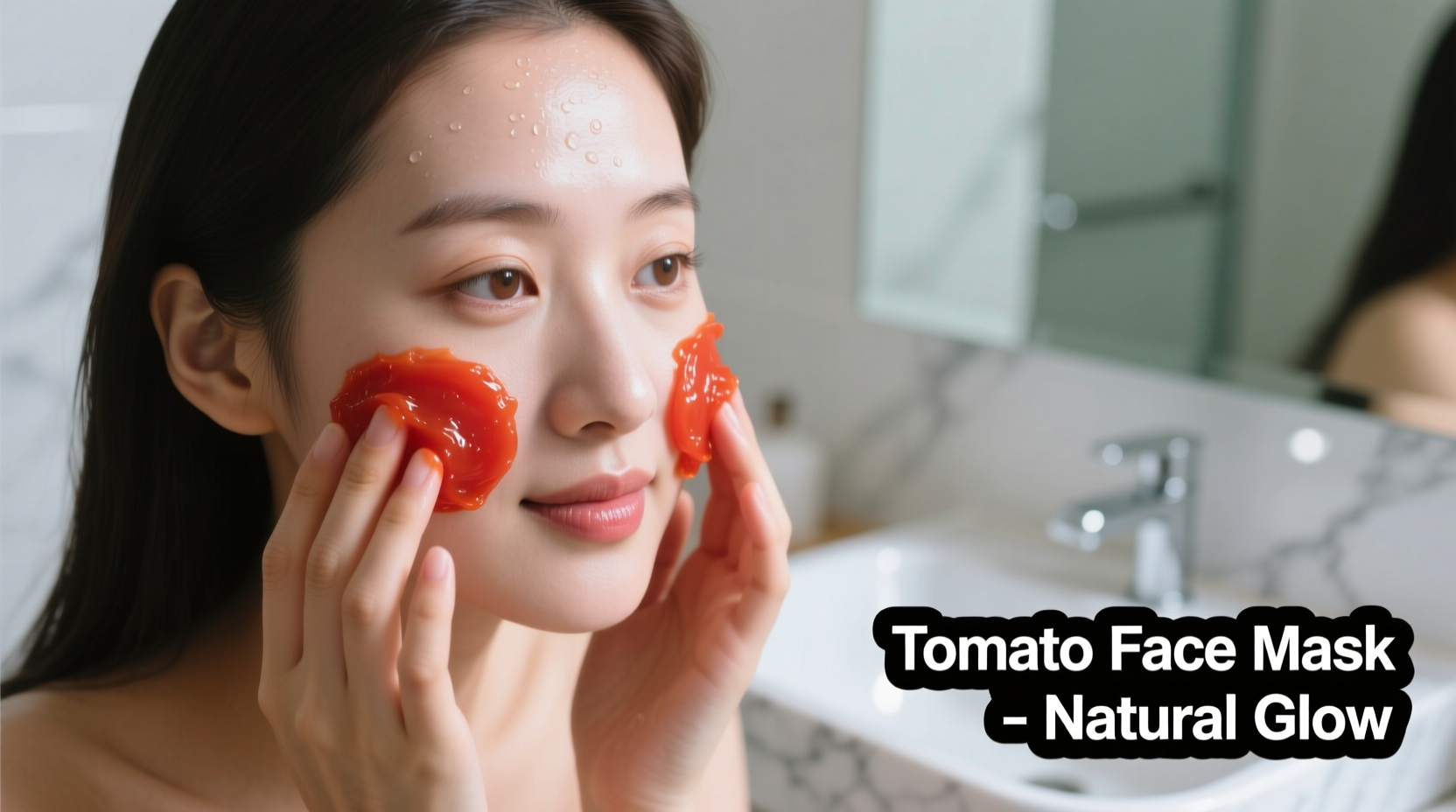Tomatoes aren't just kitchen staples—they've become a popular DIY skincare remedy. But does science back the hype? Let's separate fact from folklore with evidence-based guidance you can actually use.
The Science Behind Tomatoes and Skin Health
Tomatoes contain several compounds that interact with skin at a biochemical level. Lycopene, the pigment giving tomatoes their red color, functions as a powerful antioxidant that may help combat oxidative stress from UV exposure. Research published in the Journal of Nutrition demonstrated that dietary lycopene supplementation reduced UV-induced skin redness by 40-50% after 10-12 weeks.
Vitamin C in tomatoes supports collagen synthesis, while malic and citric acids provide gentle exfoliation. However, the concentration of these compounds in topical application is significantly lower than in clinical skincare products. A 2022 review in Dermatologic Therapy concluded that while tomato extracts show promise in laboratory settings, their effectiveness in raw form for facial application remains limited.
| Tomato Compound | Concentration in Raw Tomato | Proven Skincare Benefit | Limitation for Topical Use |
|---|---|---|---|
| Lycopene | 8.85 mg per 100g | Moderate UV protection | Poor skin absorption without formulation |
| Vitamin C | 13.7 mg per 100g | Antioxidant, brightening | Unstable, oxidizes quickly |
| Malic Acid | 0.22 g per 100g | Gentle exfoliation | Too dilute for significant effect |
| Lycopene Bioavailability | Increases with cooking | Enhanced absorption | Raw application less effective |
When Tomato Applications Actually Work (And When They Don't)
Understanding the specific contexts where tomato face treatments provide measurable benefits prevents wasted effort and potential skin issues. Based on clinical dermatology research, here's where tomatoes deliver realistic results:
- Mild oil control: The astringent properties can temporarily reduce surface oil for normal to oily skin types (American Academy of Dermatology, 2021)
- Surface brightening: Short-term improvement in skin radiance from gentle exfoliation of dead skin cells
- Minor pore appearance reduction: Temporary tightening effect from mild acidity
However, tomatoes won't address:
- Acne lesions beneath the skin surface
- Deep wrinkles or significant sun damage
- Hyperpigmentation from melasma or post-inflammatory causes
- Chronic skin conditions like rosacea or eczema
Proper Application Method: Maximizing Benefits Safely
For those wanting to try tomato-based skincare, proper technique matters more than the ingredient itself. Follow these evidence-based steps:
- Choose ripe, organic tomatoes (higher lycopene content and fewer pesticide residues)
- Extract pulp by grating or blending, then strain to remove seeds
- Apply to clean, dry skin using upward circular motions
- Leave for 10-15 minutes maximum (longer causes irritation)
- Rinse thoroughly with lukewarm water
- Follow with moisturizer to prevent drying
Frequency matters: Limit applications to 1-2 times weekly. Daily use can disrupt your skin's pH balance and natural barrier function. Always perform a patch test 24 hours before full-face application, especially if you have sensitive skin or tomato allergies.

Tomato Skincare Through History: A Timeline
The use of tomatoes in skincare isn't a modern fad but has evolved through distinct phases:
- 16th-18th Century: Tomatoes were considered poisonous in Europe; no documented skincare use
- Early 19th Century: First mentions in American folk medicine for treating burns and skin irritations
- 1930s-1950s: Beauty columns in women's magazines recommended tomato slices for oily skin
- 1980s-1990s: Emergence of "natural skincare" movement popularized tomato masks
- 2000s-Present: Scientific research on lycopene's antioxidant properties validates limited benefits
Tomato vs. Proven Skincare Alternatives
While tomatoes offer some benefits, they can't match clinically tested ingredients for specific concerns:
- For acne: Salicylic acid (0.5-2%) provides deeper pore cleansing than tomato's surface action
- For brightening: Vitamin C serums (10-20% concentration) deliver more stable, potent results
- For anti-aging: Retinoids have decades of clinical evidence supporting collagen production
Think of tomato treatments as complementary to—not replacements for—proven skincare routines. They work best as occasional refreshers between professional treatments.
Realistic Expectations for Tomato Skincare
Manage your expectations based on scientific evidence:
- Results are temporary (lasting 1-3 days)
- Effects are subtle, not transformative
- Works best as part of a comprehensive skincare routine
- Not suitable for all skin types (avoid if sensitive or allergic)
As Dr. Elizabeth Chen of the American Academy of Dermatology notes: "Natural doesn't always mean better or safer. The dose makes the poison—and the remedy. What works in a controlled clinical formulation often fails in raw, unprocessed form."











 浙公网安备
33010002000092号
浙公网安备
33010002000092号 浙B2-20120091-4
浙B2-20120091-4